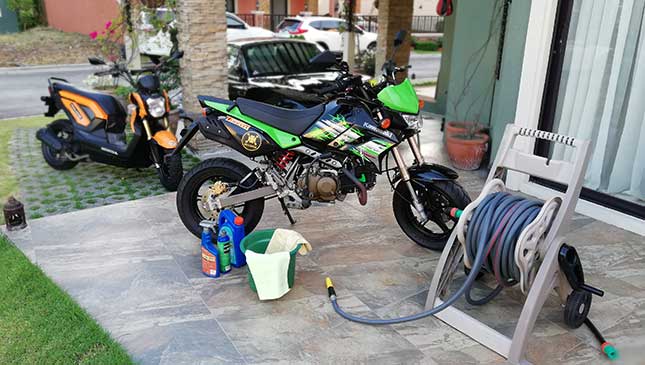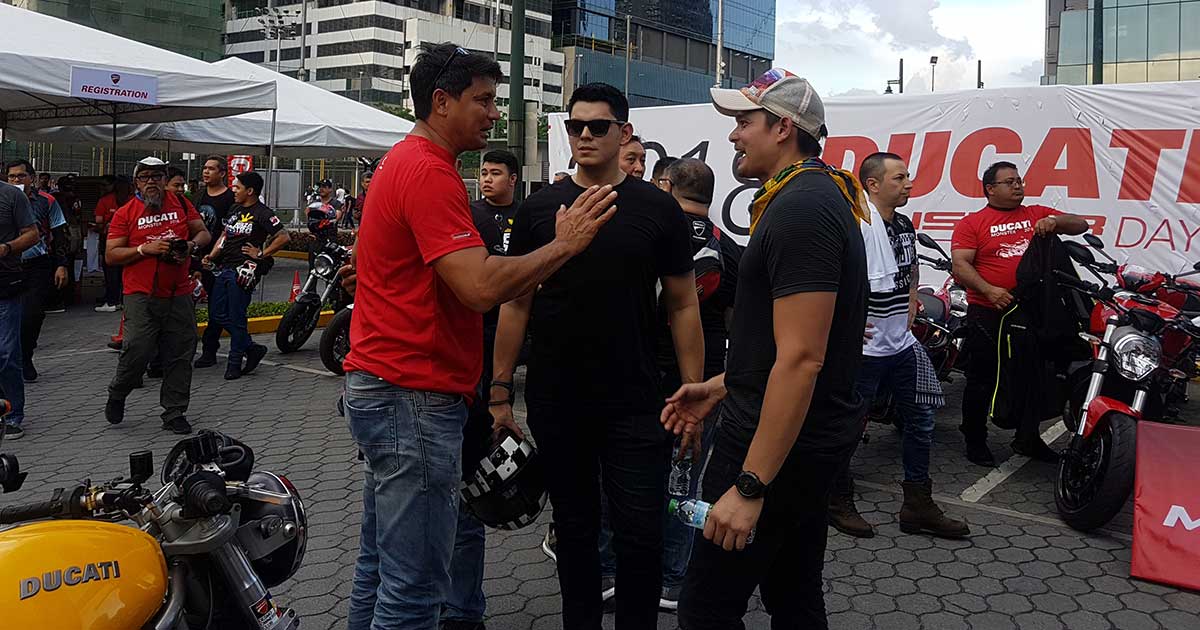
We all want our motorcycles to look good and last a long time. Although many motorbikes now are becoming affordable, these two-wheelers still require proper maintenance and grooming to preserve them.
But washing and cleaning a motorcycle requires some caution as some practices may do it harm rather than good. From paint finish to electrical parts, there are dos and don’ts that motorbike owners should be aware of when washing a bike.
Don’t just let the car wash boys grab the water hose and pump liquid in full pressure to your machine as if they’re putting out an inferno from a building. Nowadays, motorbikes are equipped with electronic sensors and these should be treated with respect to avoid damaging them.
The following tips can perhaps help the new rider in this endeavor.
1) Let the engine cool down.
Spraying your bike with water immediately after a ride results in a dramatic temperature change in the hot engine. Some refer to this as “thermal shock,” and it could have adverse effects on the metal parts of your bike or the finish. Prudence dictates that you wait a few minutes before dousing your hot bike with water.
2) Prepare the cleaning kit.
There’s nothing worse than being in the middle of the task of washing your bike and you need something else that’s not around. Hence, it’s best to gather all the implements that you need to do the job right before you get started. You’ll need a stiff brush, a soft brush, chamois, towels, and non-abrasive soaps compatible with automotive paint finishes.
3) Empty the compartment.
You may have a compartment in your bike where you keep some items (tools, registration documents, emergency kits, etc.). Open the cargo area, and empty it before you start washing your bike to avoid soaking those things.
4) Waterproof wire connections.
Make sure the bike’s electrical, hydraulic, and cable connections are secure and water-resistant. Your bike’s electrical/ignition system, the hydraulic brake system, and the cable controlled clutch don’t take too well to water. Water interrupts electrical signals. Water in a hydraulic system causes rust to develop in the hard lines and master cylinders, and clutch cables also rust in the presence of water. Make sure that the points where water can enter these systems are protected. Entry points like spark plug boots, the brake fluid reservoir, and the ends of the clutch cable should be protected. You can use sheets of plastic to wrap these entry points to minimize or eliminate the entry of water into these areas.
5) Plug exhaust pipes.
Washing your bike can cause water to enter your exhaust, which could cause pooling of water inside the pipe. This water can cause your exhaust to corrode from the inside and cause premature wear of the system. It’s a good idea to plug your exhaust tip with a rag when washing your bike.
6) Clean and lube the chain.
Cleaning a motorcycle’s chain drive can get rather messy, so it makes sense to undertake this task first as you’ll be splattering dirt and oil around your bike in the process. You don’t want to do this when your bike has just been cleaned. Otherwise, you’ll have to wash all the parts where you’ve splattered dirt and oil onto. Use a solvent like a degreaser with a stiff brush to clean the chain, then hit the chain with some chain lube after the wash.
7) Never apply rubber fresheners on tires.
It’s a good idea to hit the rubber parts like insulators, vacuum hoses, and rubber fuel lines with rubber protectants like silicone spray. But don’t get them on the tires. Unlike cars, motorcycles lean into turns and the tread on a motorcycle tire gets far down into the sides merging with the tire sidewall. Getting rubber protectant on the tire tread can make the tire tread slippery, lose grip, and cause the rider to fall.
8) Match the solvent to the finish.
A motorcycle is made up of several kinds of materials and finishes--from plastics and delicate finishes to hard metals. Be ready with solvents that can clean each part well without damaging them. You want a degreaser for the engine/drivetrain, and mild soaps that don’t dry out paint finishes for the tank and fairings.
9) Do not use oil to remove rust.
You will notice that your brake rotors will have a film of rust on them especially after washing your bike. Do not oil your brake rotors in an attempt to protect them from rust. The rust on your brake rotors is normal and need not be addressed. Oiling your brake rotors will cause a significant decrease in stopping power.
10) Thoroughly dry the bike.
Water on painted finishes cause water spots; water on bare metal causes corrosion. Dry your bike thoroughly to avoid water spots and rust on your bike.
Now that your motorbike is immaculately clean, be ready to hear this line again: Wow, bagong bike! Astig!
